Maximizing bedding storage isn’t about cramming more into cramped cupboards—it’s about pairing each item with a spot that guards it from dust, damp, and chaos. Under-bed drawers tackle bulk, vacuum bags tame loft, and clever furniture keeps everything at arm’s reach without cluttering the room. Whether you live in a studio or a sprawling home, the twenty ideas below blend protective materials, smart labeling, and multipurpose design so every sheet, quilt, and pillow finds a tidy, easy-to-grab home.
1. Under-Bed Drawers Keep Bedding Dust-Free

A sturdy drawer on wheels turns the forgotten space beneath your mattress into prime bedding storage. Start by measuring under-bed clearance, then choose low-profile boxes or drawer units that glide out smoothly. Hard-sided options resist pests and dust, while soft zip cases squeeze into slimmer gaps. Slip silica packets inside to curb damp, and add stick-on labels so each drawer serves a single purpose—guest sheets, winter duvets, or spare pillows—reducing rummage time. Thanks to their out-of-sight placement, under-bed drawers free closet shelves for towels yet keep bulky linens one tug away during a midnight spill.
2. Vacuum-Seal Bags Shrink Seasonal Bedding
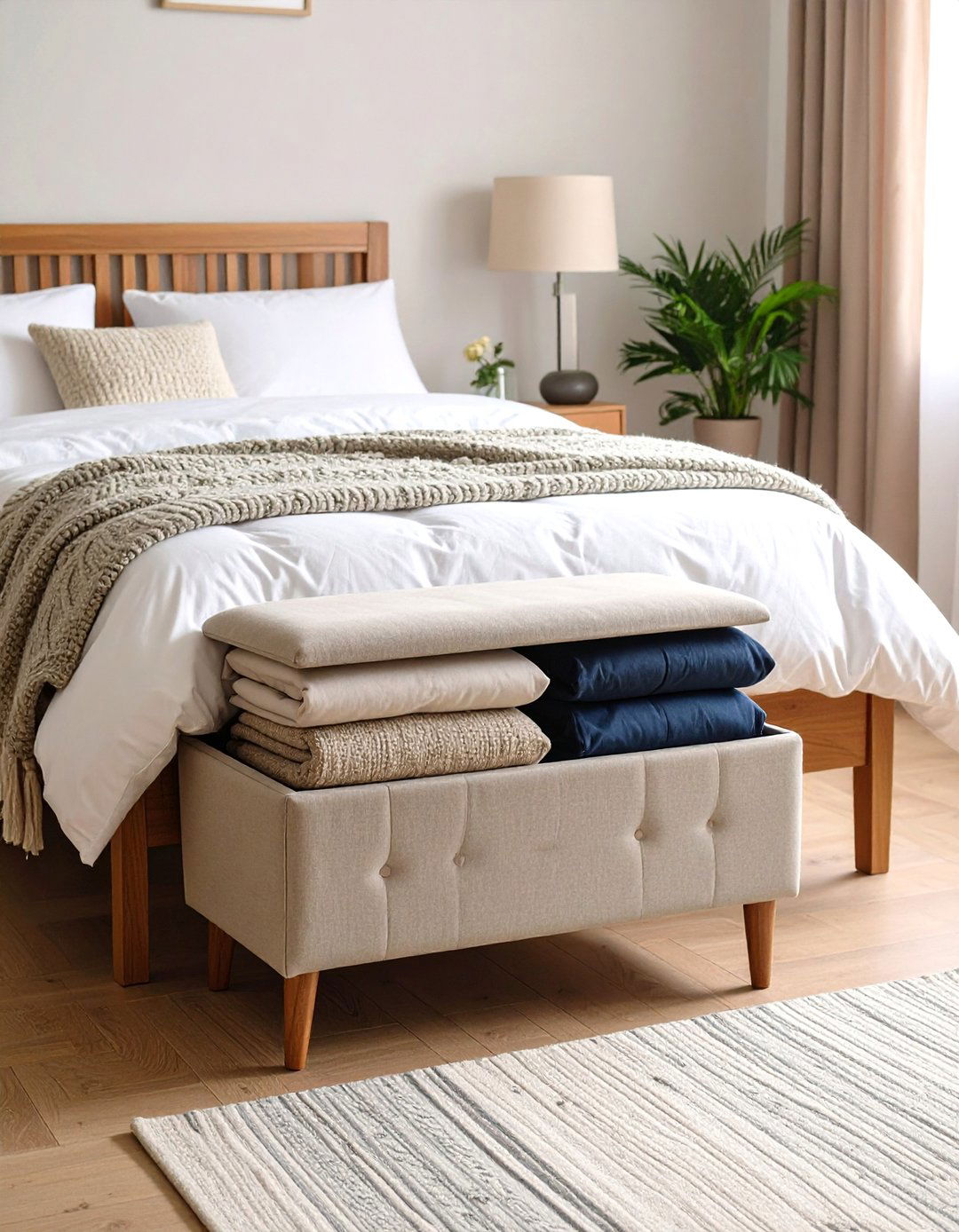
The quickest way to reclaim closet acreage is to pull out a hand pump—or your vacuum hose—and compress comforters to a third of their size. Heavy-duty, clear bags let you spot contents instantly while locking out moisture and dust mites. Stack the flattened pouches upright on a high shelf or slip them under a platform bed to keep them pristine until the weather turns. For heirloom quilts, open and refold every few months to prevent creases, then reseal; the brief task preserves loft without forfeiting precious square footage.
3. Storage Ottomans Hide Bedding in Plain Sight
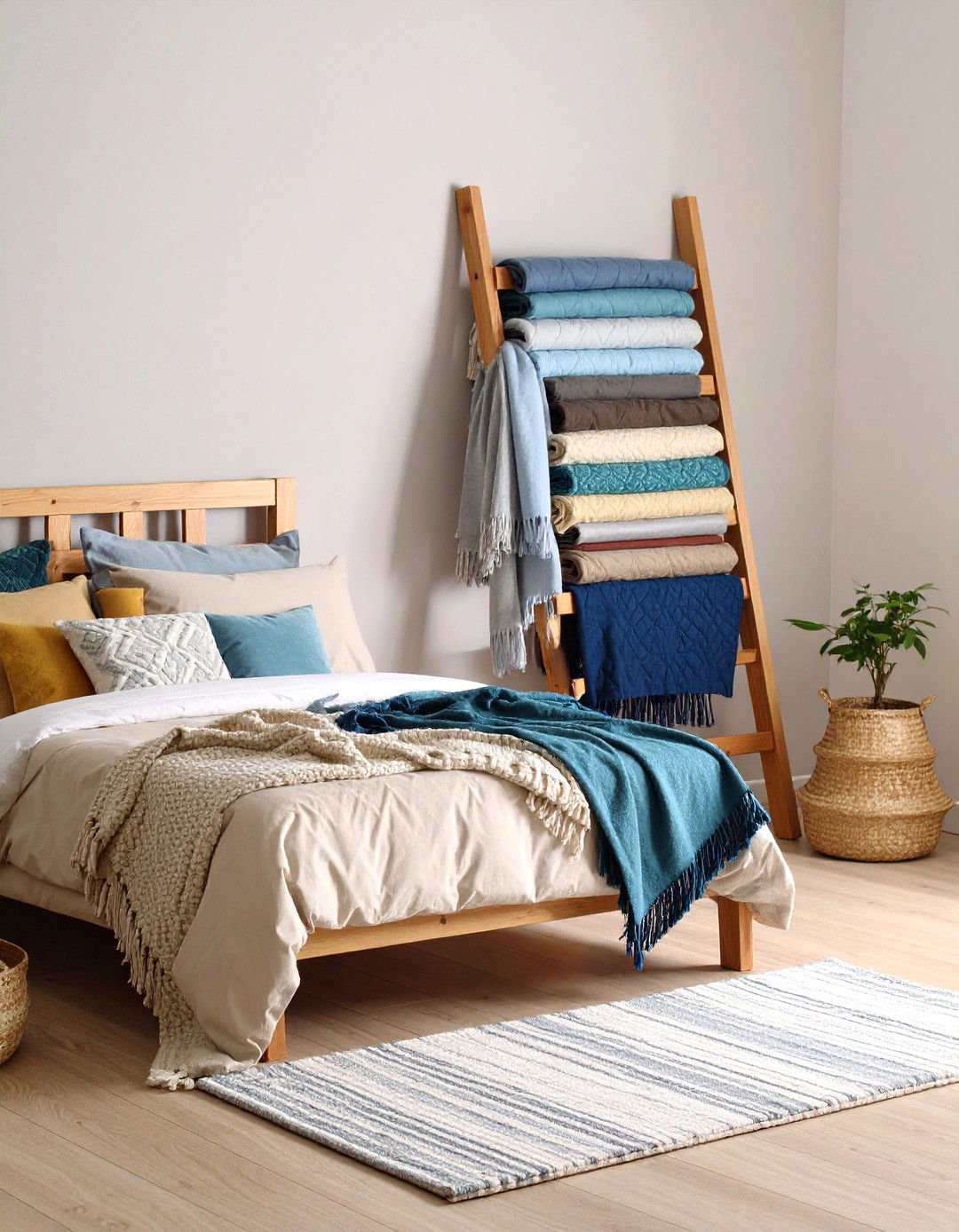
Place a lift-top ottoman at the foot of the bed and you’ll gain a seating perch plus a linen vault. Choose a model with a ventilated fabric lining to discourage mustiness, and line the base with cedar sachets to deter moths. Fold sheet sets into rectangles and stand them like files so nothing sinks to the bottom. Whenever guests arrive, flip the cushioned lid, pull out pristine linens, and close it again—no visual clutter, no extra furniture footprint.
4. Display Throws on a Blanket Ladder for Bedding Storage
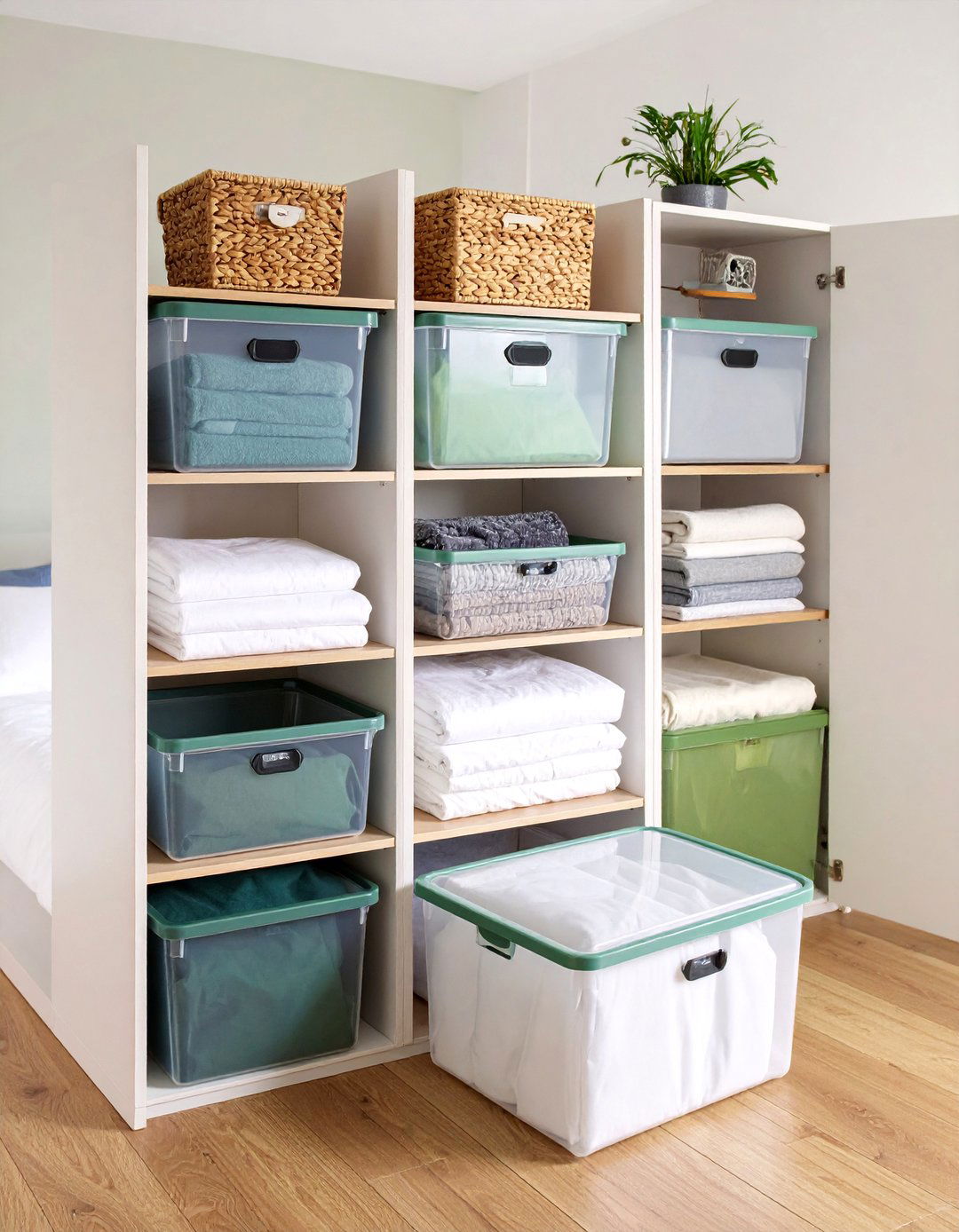
Leaning ladders aren’t just decorative—they convert bare wall space into vertical linen real estate. Drape everyday throws or spare coverlets over the rungs, arranging lighter fabrics up high and weightier quilts near the floor for stability. This setup keeps blankets aired out, visible, and wrinkle-free, while the ladder itself becomes a design statement. Anchor tall versions to a stud if pets or children might tug, and launder displayed items regularly since open storage invites dust.
5. Clear Bins Labelled by Season Simplify Bedding Storage
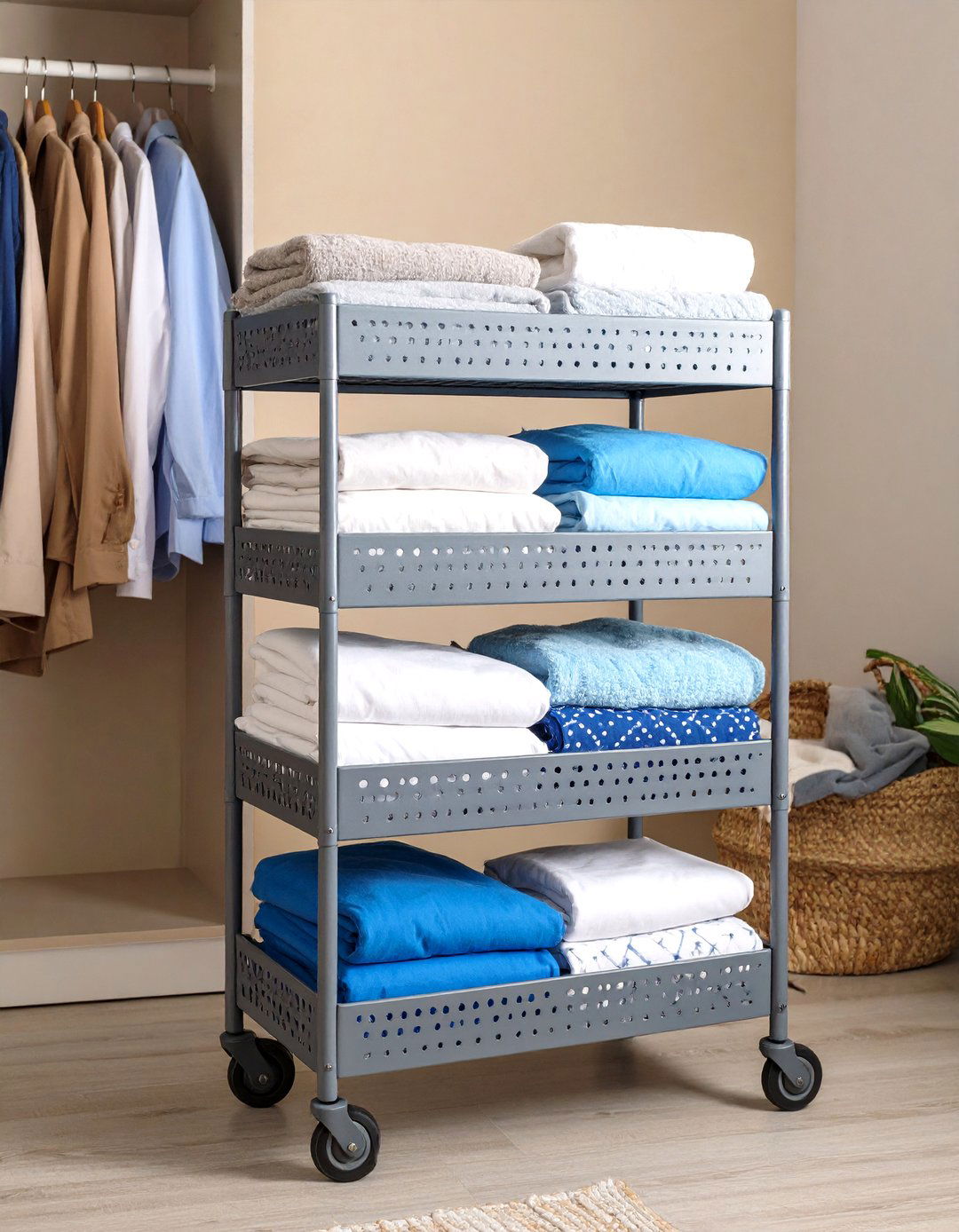
Transparent, stackable bins let you group linens by summer, winter, or guest use and spot them in seconds. Slip an index card facing outward so you can swap labels without peeling stickers. Store lighter cotton sheets on the closet’s eye-level shelf and flannel sets lower where weight isn’t an issue. Because lids snap tight, bins double as protection against basement damp or attic critters, yet they’re light enough to haul to the laundry room when rotation day rolls around.
6. Slim Rolling Cart Parks Spare Bedding Anywhere
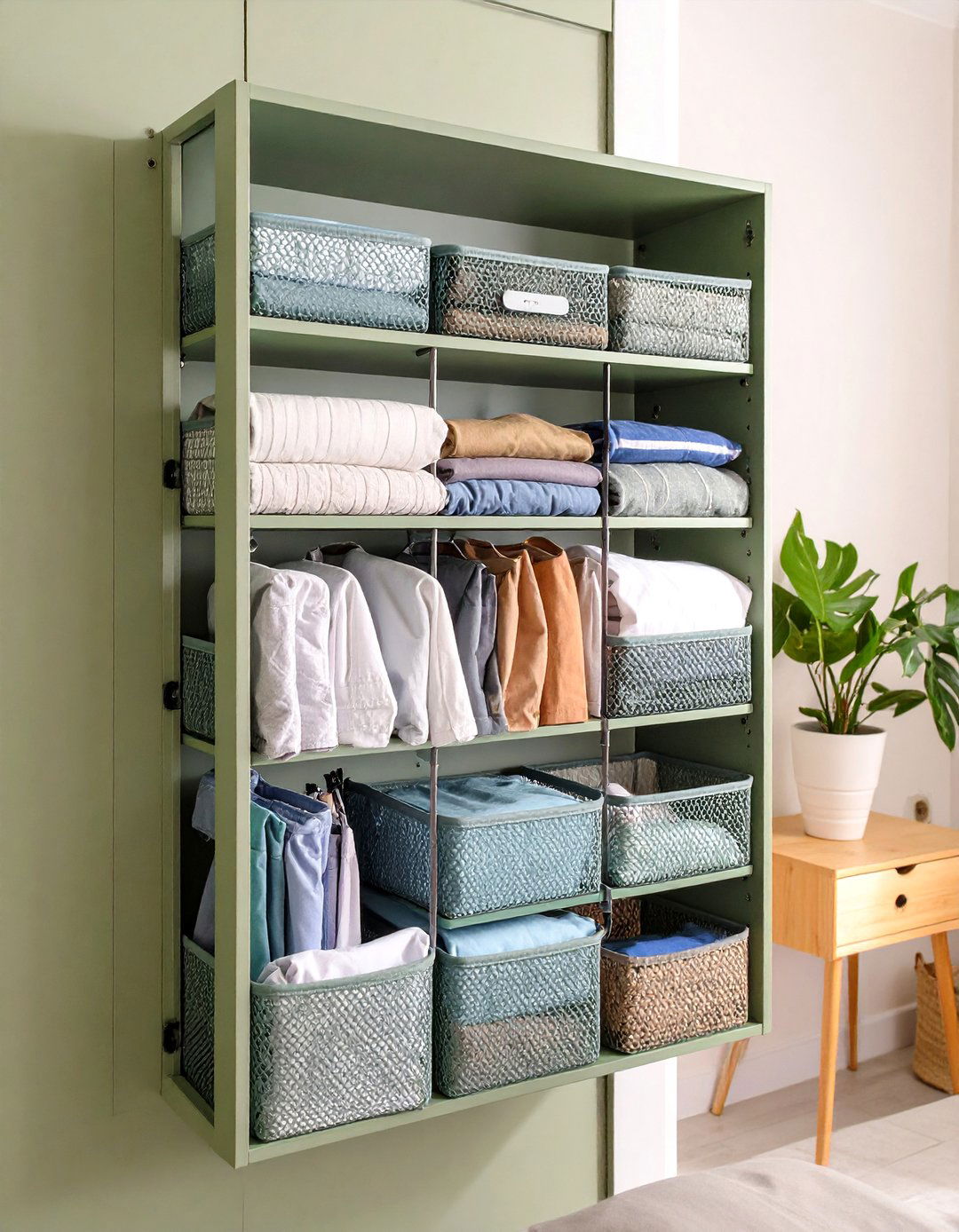
Rolling utility towers just eight inches wide glide into bathroom nooks, hall corners, or between wardrobe and wall. Stash rolled pillowcases on upper tiers and guest hand towels below, locking the wheels so the cart stays put until needed. A metal frame with perforated shelves encourages airflow, preventing musty smells. When visitors leave, wheel the cart to the washer, reload it with fresh linens, and slide it back into hiding—no shelving installation required.
7. Over-Door Pockets Hold Lightweight Bedding Sets

A multi-tier organizer hung over a closet or bedroom door corrals fitted sheets, flat sheets, and pillowcases in separate mesh pockets. Because weight capacity tops 30 kg on some designs, even a queen set stays secure. Label each row by bed size, and children can grab their own linens without upending shelves. This hack liberates prime closet real estate while putting your door—the room’s largest vertical surface—to smarter use.
8. Shelf Dividers Stop Bedding Stacks From Toppling
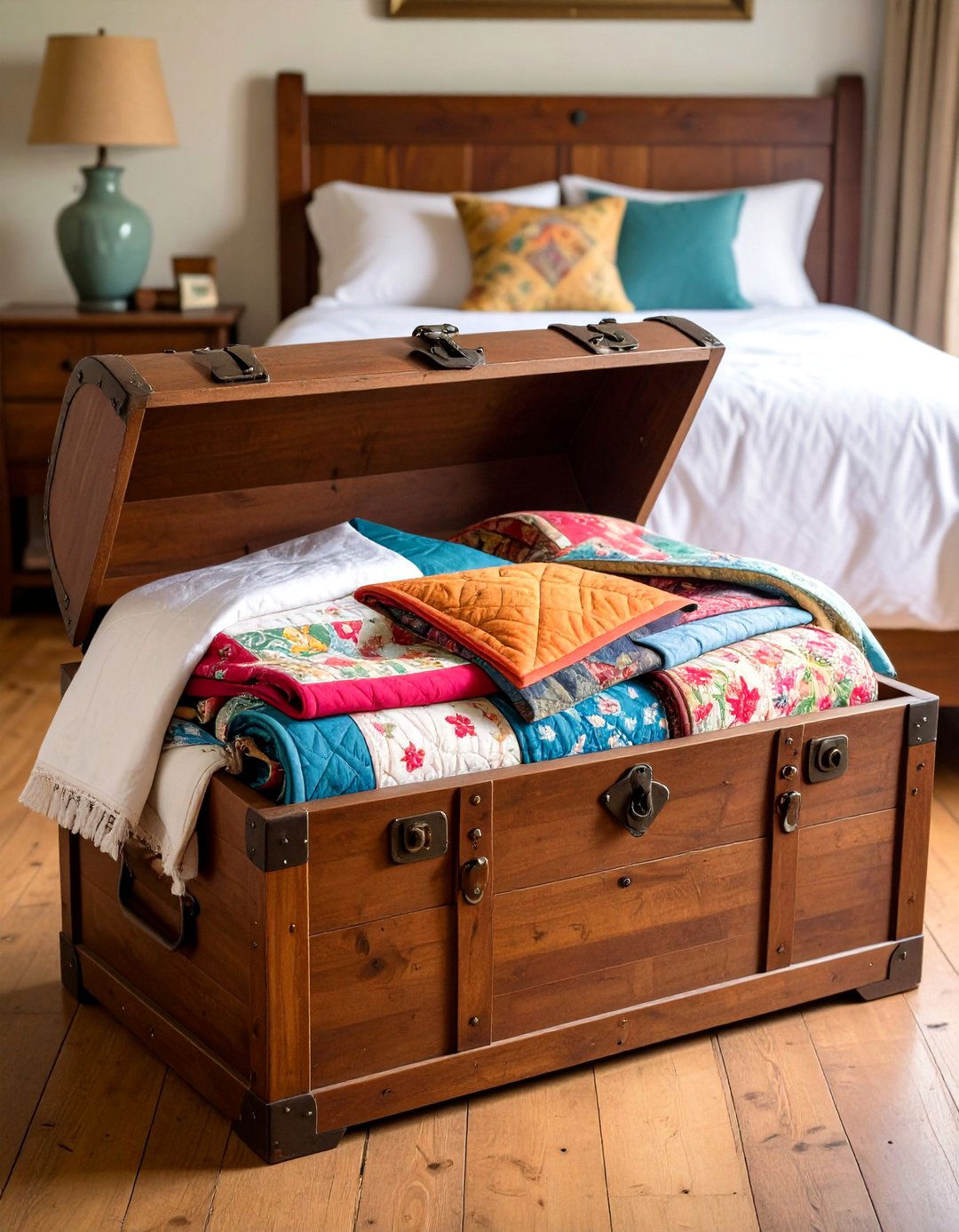
Wire or acrylic dividers slide onto existing closet boards, creating instant cubbies so towers of blankets stay upright instead of slumping into chaos. Place the tallest items at the back and thinner pillow shams in front for easy visibility. Because dividers are clear, the closet feels open rather than boxed-in, and you can adjust spacing as your collection changes. Add clip-on labels to each cubby—“twin sheets,” “guest queen”—for grab-and-go organization.
9. Hydraulic Lift Beds Reveal Deep Bedding Storage
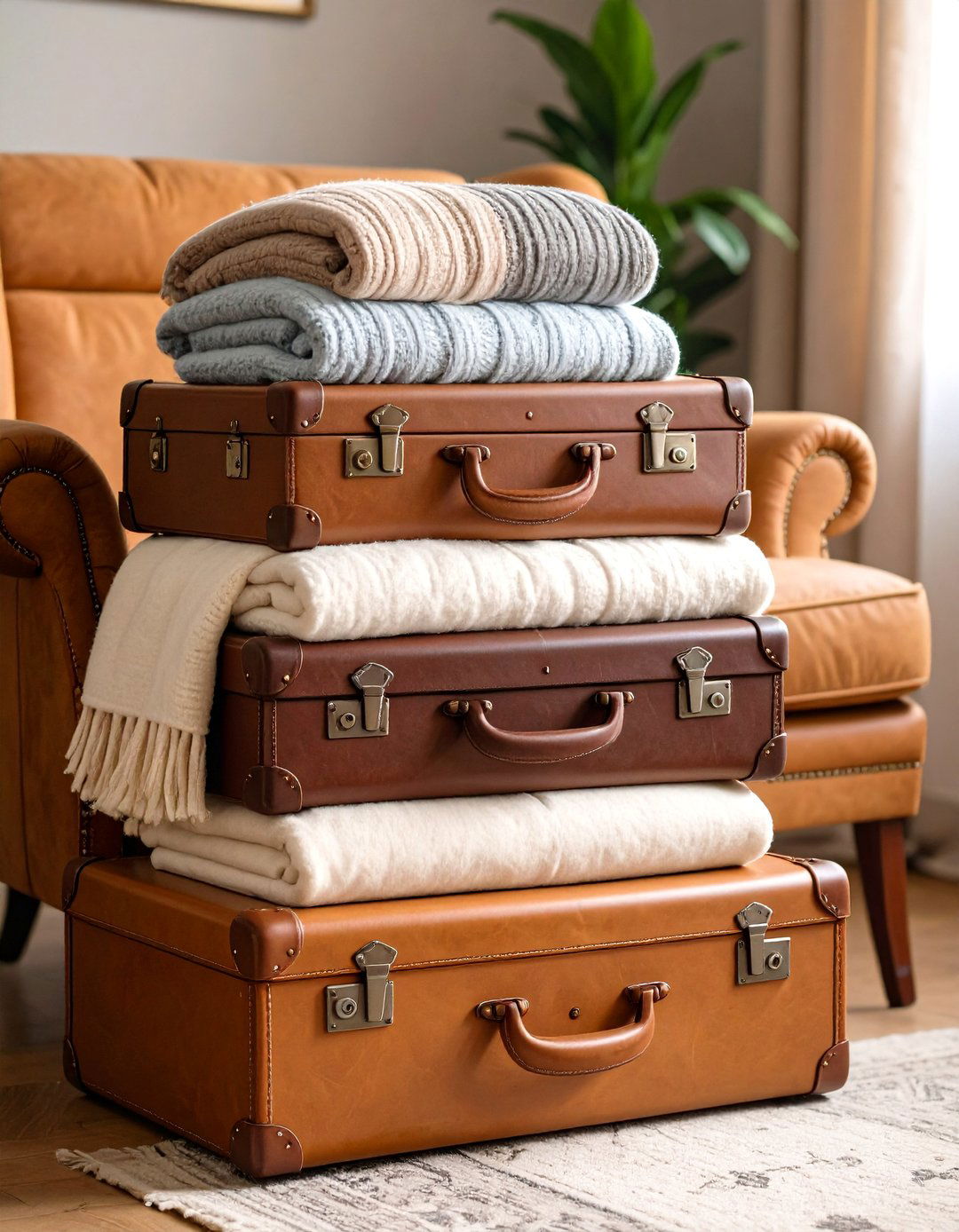
If drawers eat hallway clearance, consider a gas-lift platform bed: pull a cloth strap and the entire mattress rises effortlessly, exposing a cavernous compartment perfect for bulky duvets or suitcases of linens. Interior plywood bases protect fabric from floor dust, while piston hinges hold the platform aloft so you can use both hands. Because the storage zone is concealed, it’s ideal for seldom-used seasonal bedding that would otherwise monopolize precious closet shelves.
10. Cedar Chest Preserves Heirloom Bedding

Cedar’s natural oils repel moths, making a hope chest a classic sanctuary for vintage quilts and wool blankets. Line the interior with unbleached cotton or acid-free tissue to prevent direct wood contact, which can discolor delicate fabrics over time. Rotate textiles twice a year, refolding along different lines to avoid permanent creases, and replace cedar blocks every few seasons to keep aroma—and protection—strong.
11. Vintage Suitcases Turn Into Charming Bedding Storage
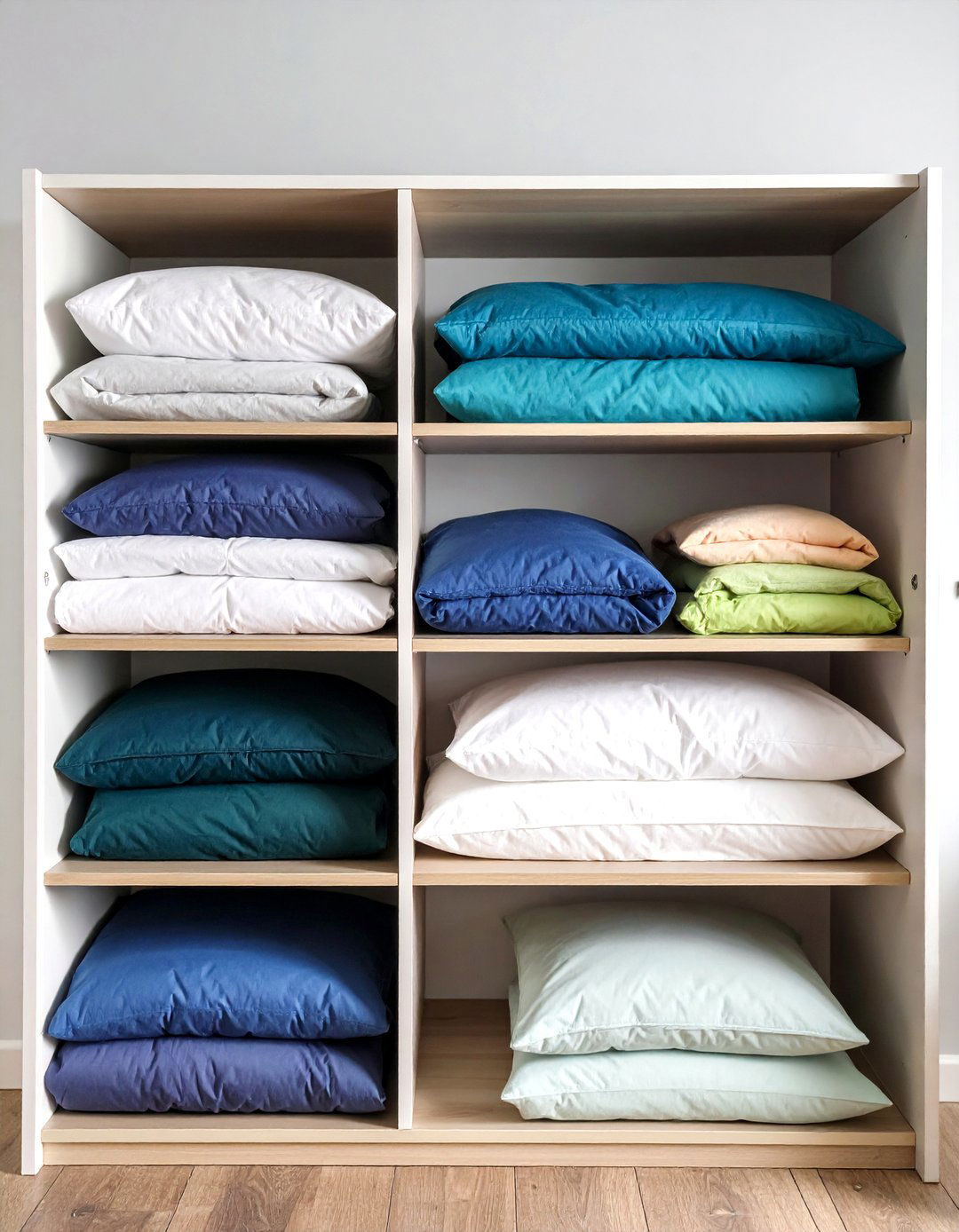
Stacked leather or tweed suitcases lend character while swallowing spare linens. Clean interiors with a mild vinegar solution, let them dry thoroughly, then add breathable cotton liners. Place heavier blankets in the bottom case to stabilize the tower and lighter sheets above. The latches keep dust out, and built-in pockets organize pillow shams or lavender sachets. Set the stack beside a reading chair and you’ve added both storage and a conversation-starting end table.
12. Open Baskets Under a Bench House Everyday Bedding
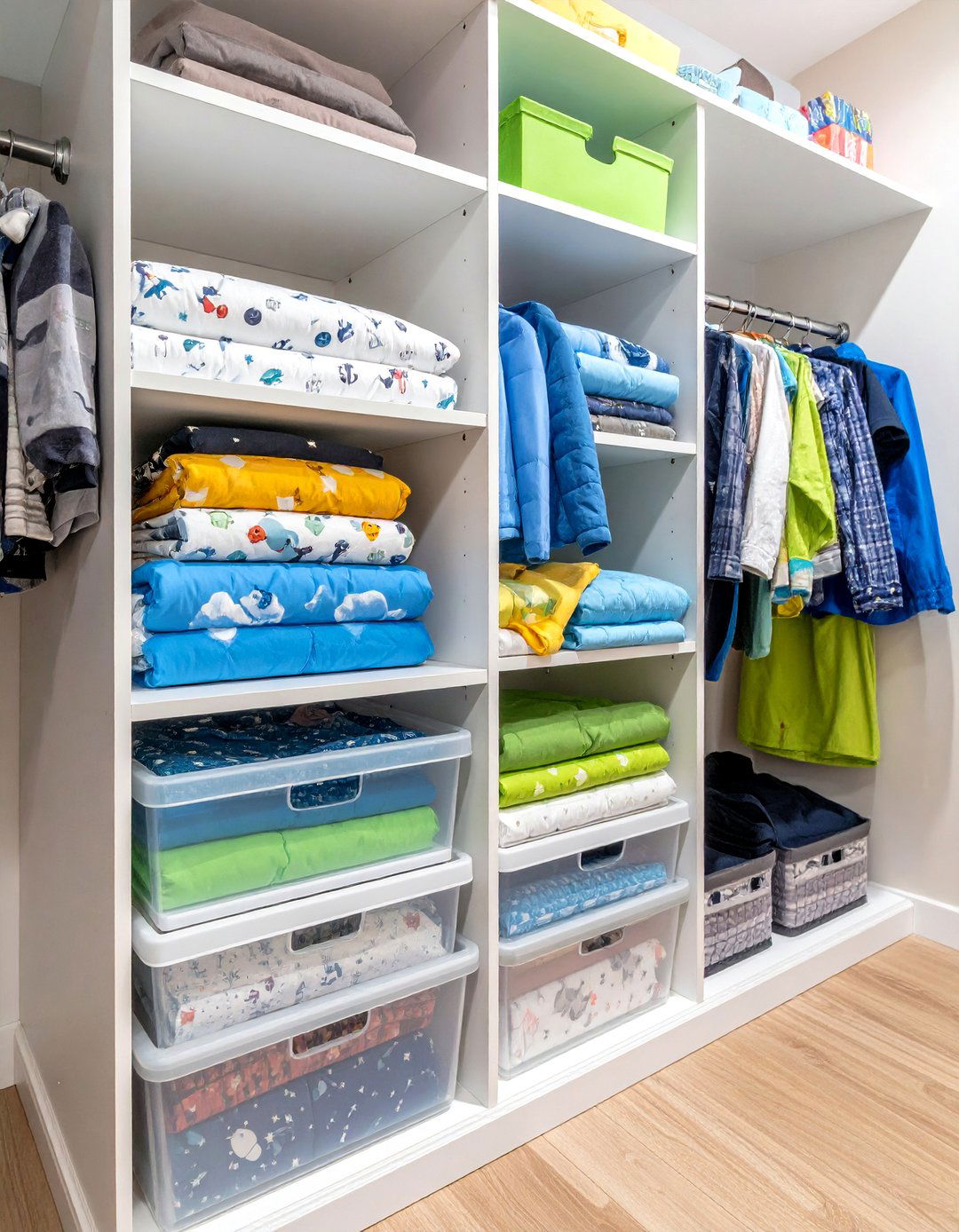
Sliding roomy wicker or fabric baskets beneath a window bench creates a landing zone for throw blankets or extra pillows used nightly. Choose baskets with built-in handles and rigid sides so they pull out easily and retain shape. Because contents stay visible, family members are likelier to return items to their rightful spot, maintaining tidiness without policing. Slip a washable cotton liner inside each basket to catch loose threads and make cleaning effortless.
13. Pillowcase-Inside Method Keeps Bedding Sets Together
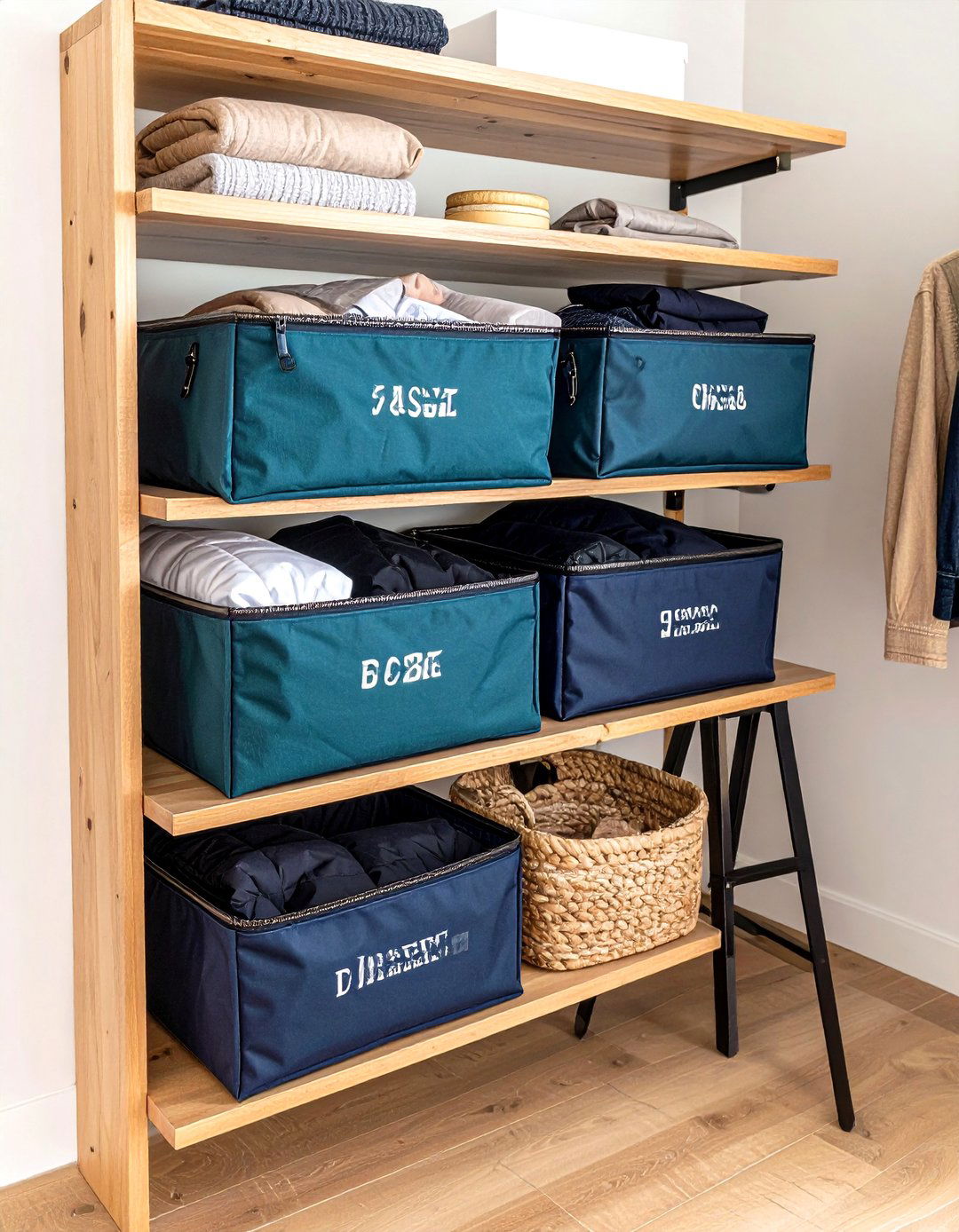
Fold fitted and flat sheets into rectangles, tuck them plus one pillowcase into the second pillowcase, then place the tidy “bedding bundle” on a shelf. The self-contained package means no hunting for matching pieces, and the outer pillowcase guards the set from dust. Store the bundles upright like files so you can slide one out without shifting the stack, and label shelf edges by bed size for quick identification.
14. Modular Drawers in Kids’ Closets Save Bedding Space
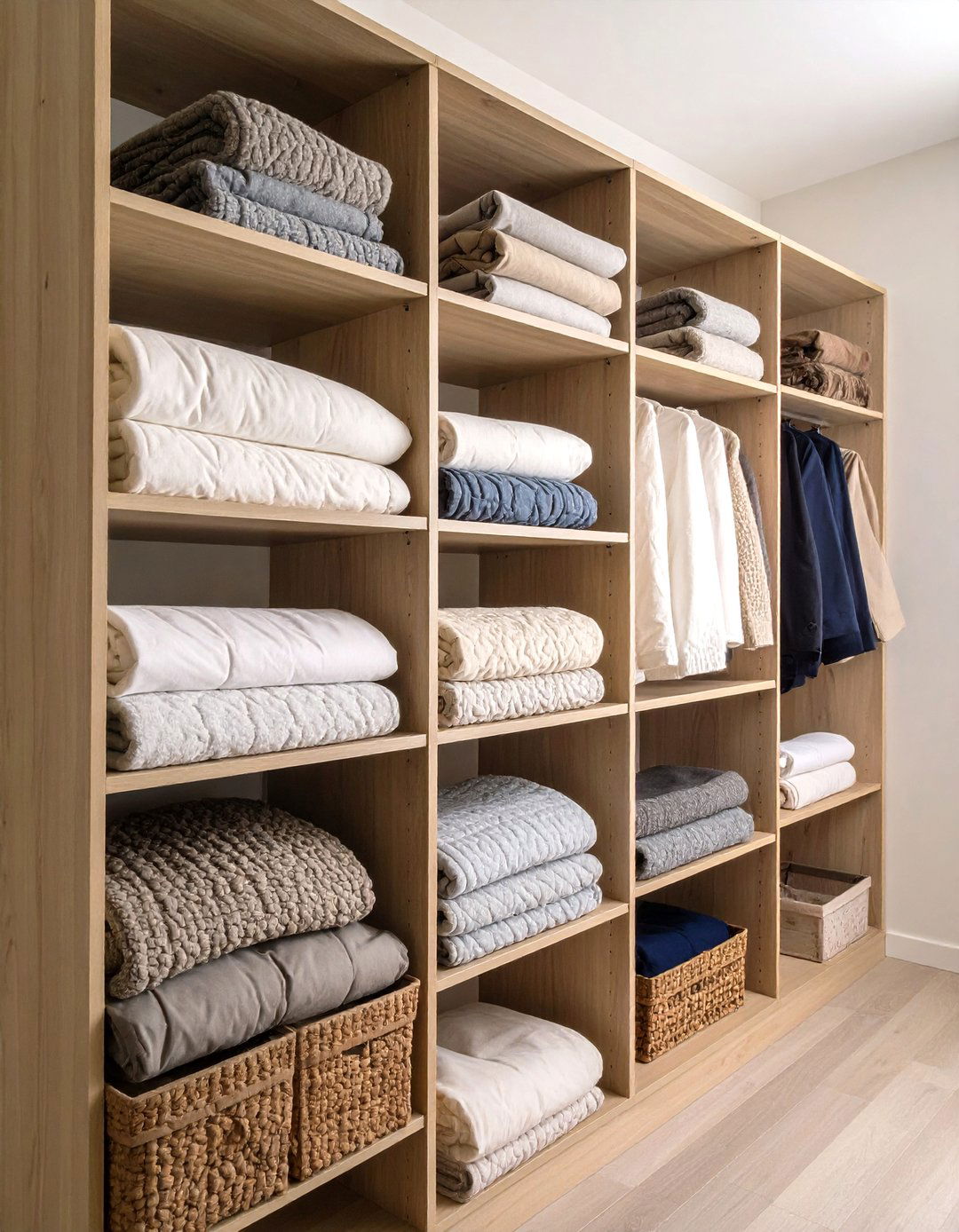
Children’s closets often have wasted vertical gaps beneath their short clothing rails. Slide in stackable plastic drawers to hold crib sheets, toddler quilts, or spare mattress protectors. Transparent fronts show what’s inside, and lightweight construction lets kids participate in laundry day by putting their own bedding away. As children grow, reassign drawers to out-of-season clothing, proving the system’s adaptability.
15. High Closet Bins Stash Off-Season Bedding
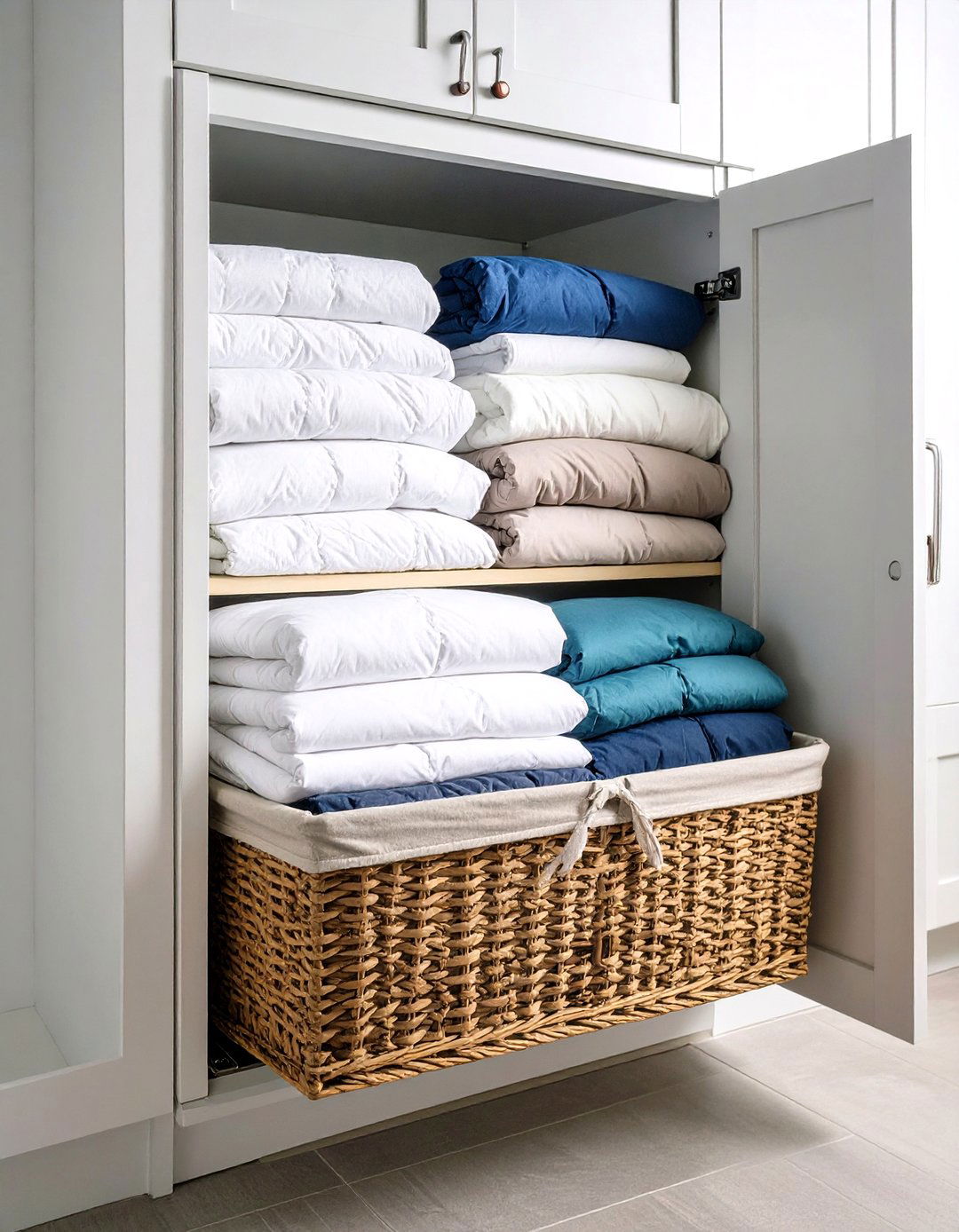
Look up: the unused top shelf can house bulky winter comforters inside labeled canvas bins with zip tops. Place a folding stool nearby so retrieval is safe, and tuck a moisture-absorbing charcoal bag inside each bin to combat attic-like heat near the ceiling. Rotating contents seasonally frees lower shelves for frequently washed sheets, streamlining both storage and laundry flow.
16. Hanging Canvas Shelves Organize Folded Bedding
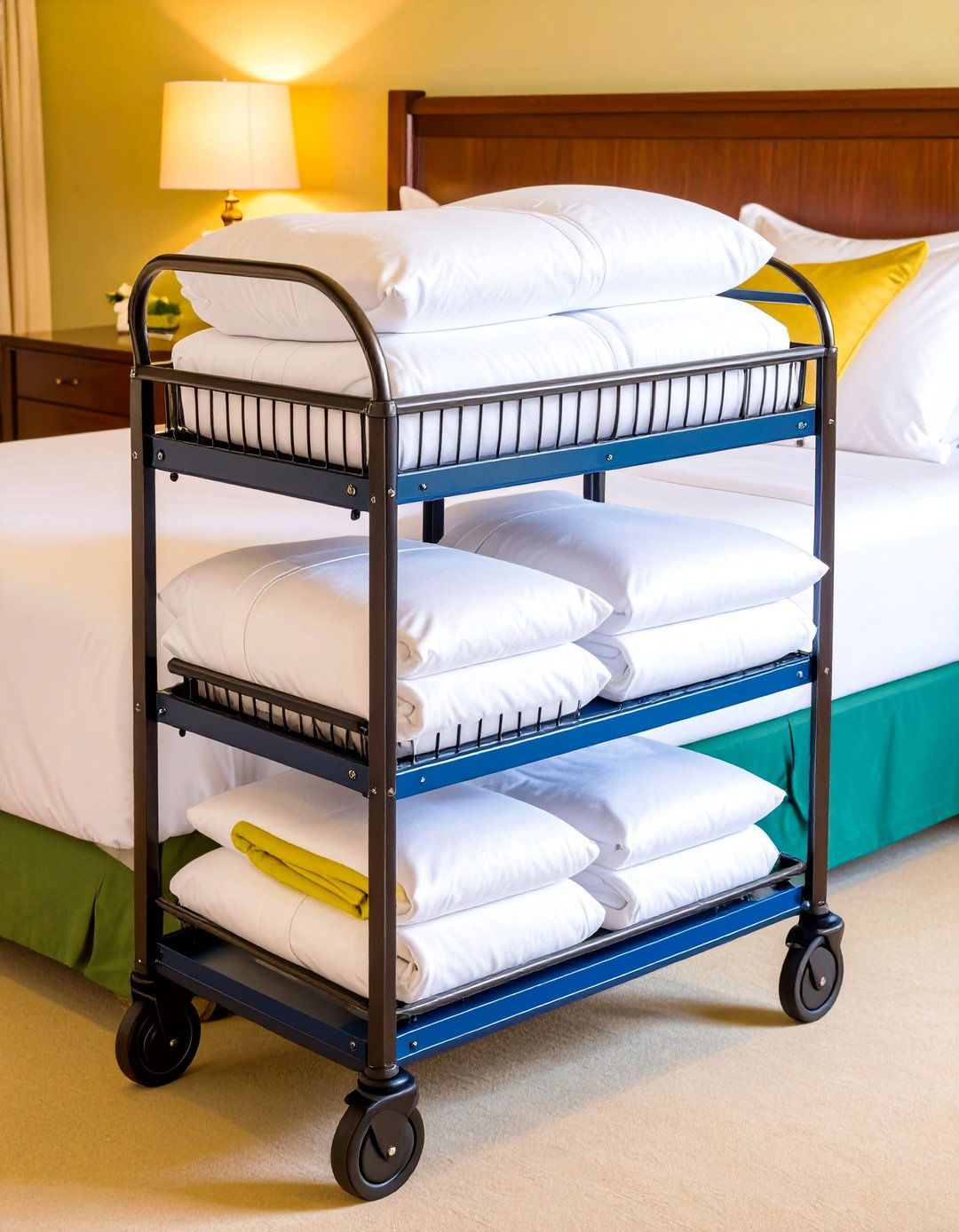
Soft cubbies that hook over wardrobe rods transform hanging space into vertical shelving. Assign one slot to each set—twin, queen, guest—and slide rolled sheets or blankets inside. Breathable cotton fabric prevents mildew yet shields contents from closet dust. When laundering day arrives, lift the entire organizer off its rod, carry it to the washer, then rehang—less juggling, fewer dropped items.
17. Slide-Out Trash Bin Hack Corrals Bulky Bedding
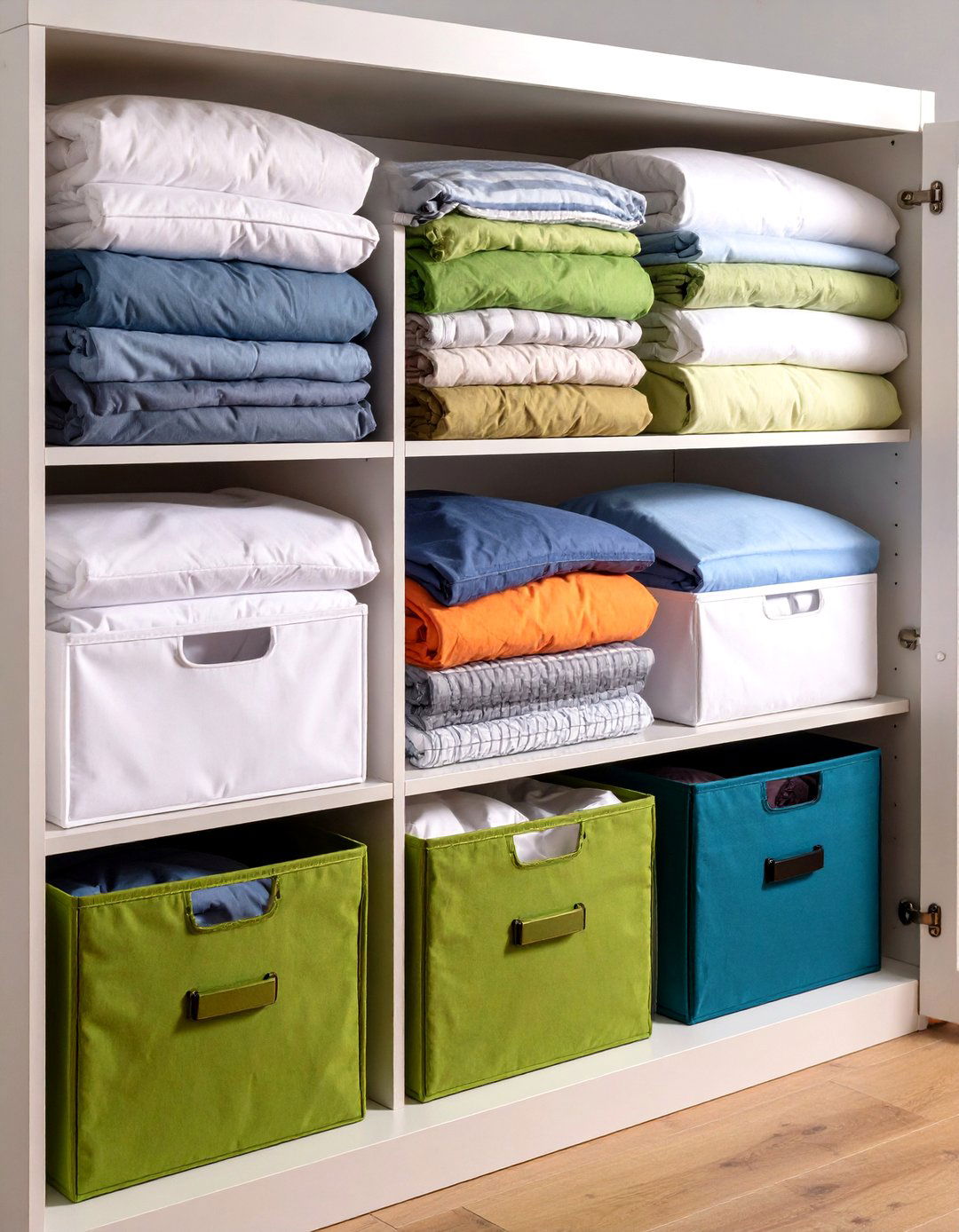
Install a pull-out trash-bin frame inside a laundry-room cabinet and swap the pail for a cotton-lined bin dedicated to comforters. The deep cavity keeps king-size inserts upright and contained; the slide hardware means you can access them without wrestling shelves. Because the cabinet door closes flush, linens stay protected from pets and dust while occupying zero floor space.
18. Rolling Linen Cart Serves Mobile Bedding Storage
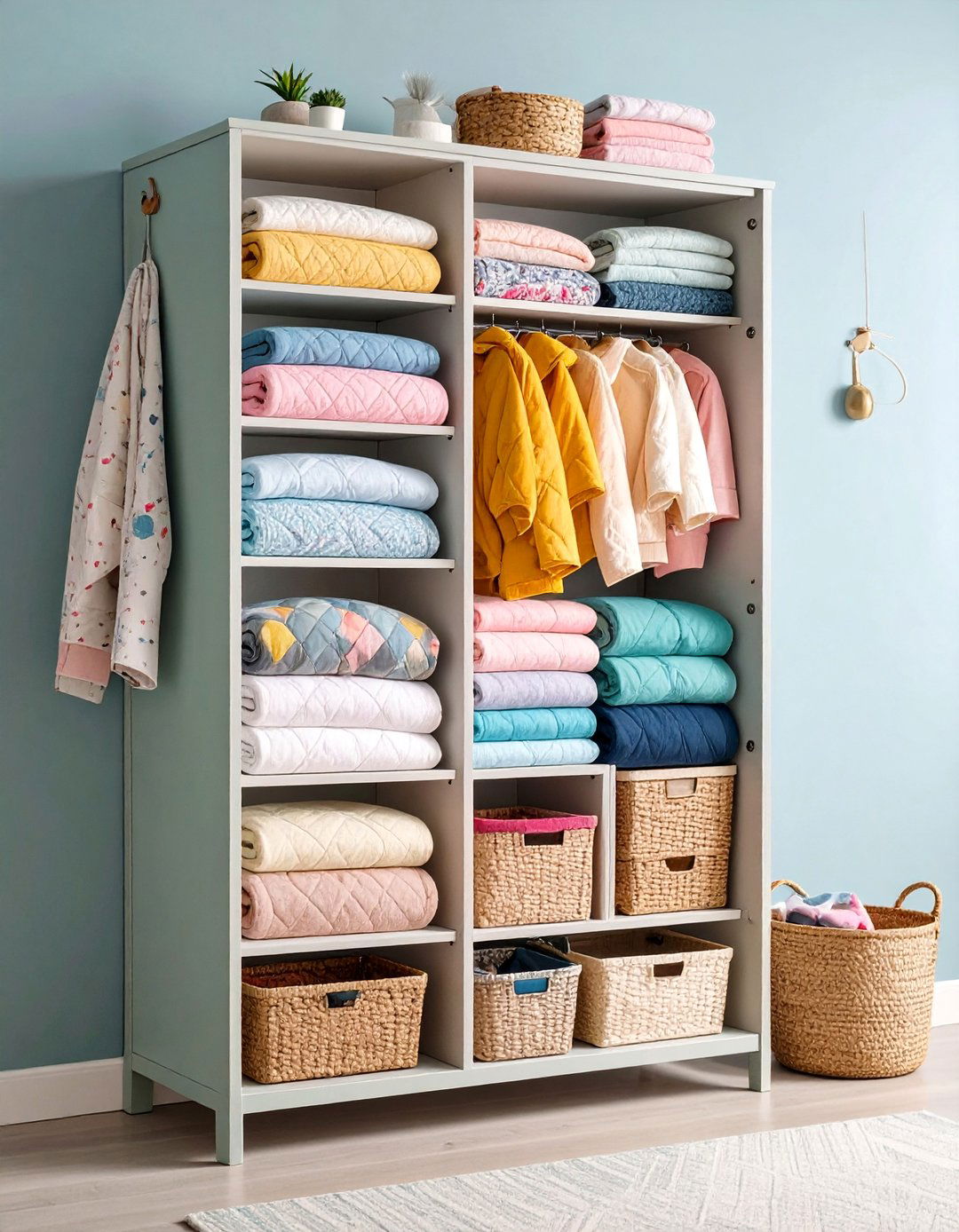
A bar-cart-style unit with rails and shelves becomes a roving linen station for guest rooms. Load the top with folded sheet sets, stash extra pillows below, and wheel it beside the bed when company arrives. After checkout, roll it back to the laundry area, swap in fresh bedding, and park it in a closet until the next visit—hospitality made seamless.
19. Filing-Box Organizers Tame Cupboard Bedding Clutter
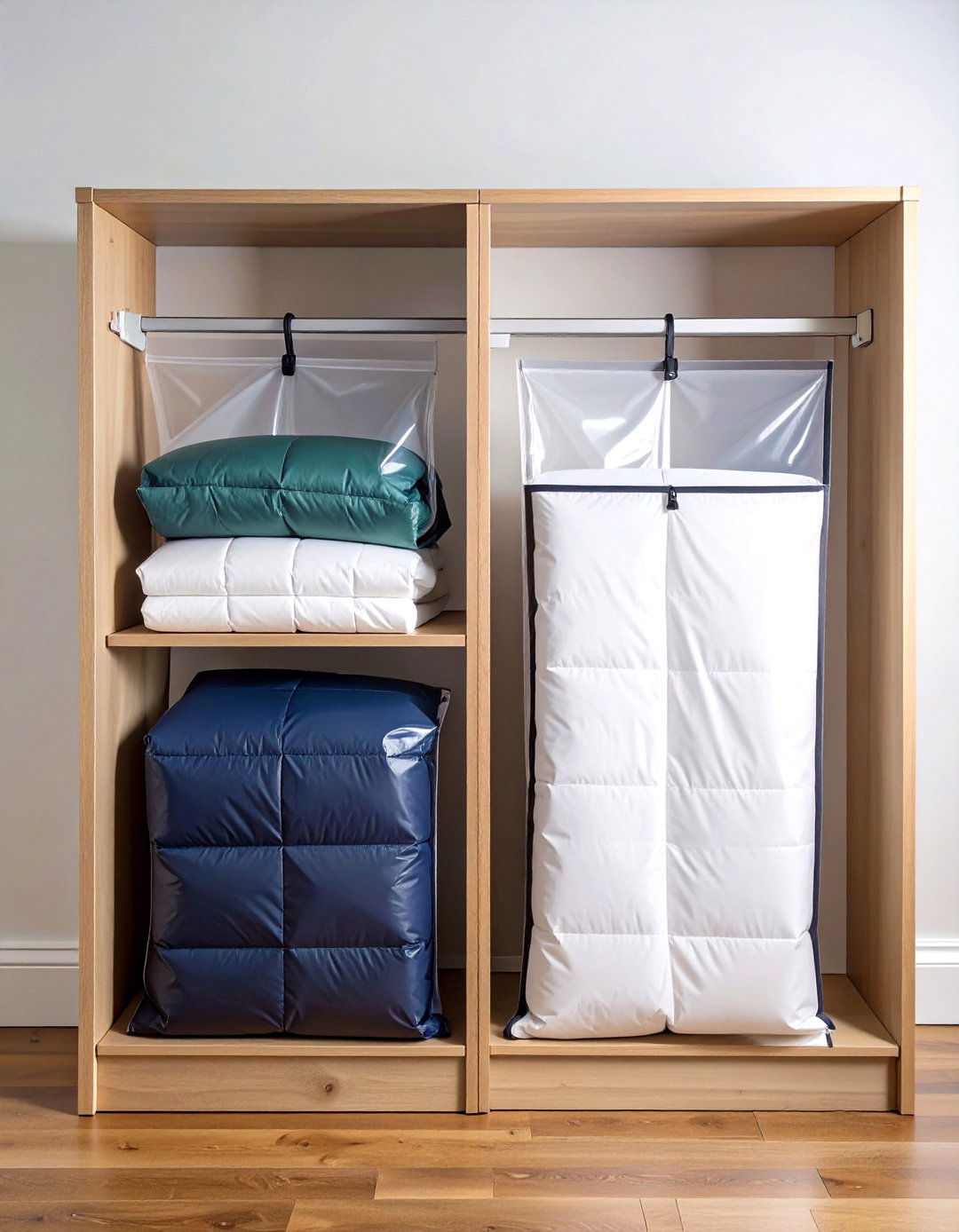
Flat, fabric-covered boxes roughly the size of banker’s files slot neatly onto shallow shelves, each holding a complete bedding set. Clear windows reveal patterns at a glance, and stitched handles slide the box out like a drawer. Stack three high in an airing cupboard, and the formerly chaotic pile transforms into labeled, crease-free order family members can maintain with ease.
20. Linen Cabinet With Adjustable Shelves Dedicates Space to Bedding
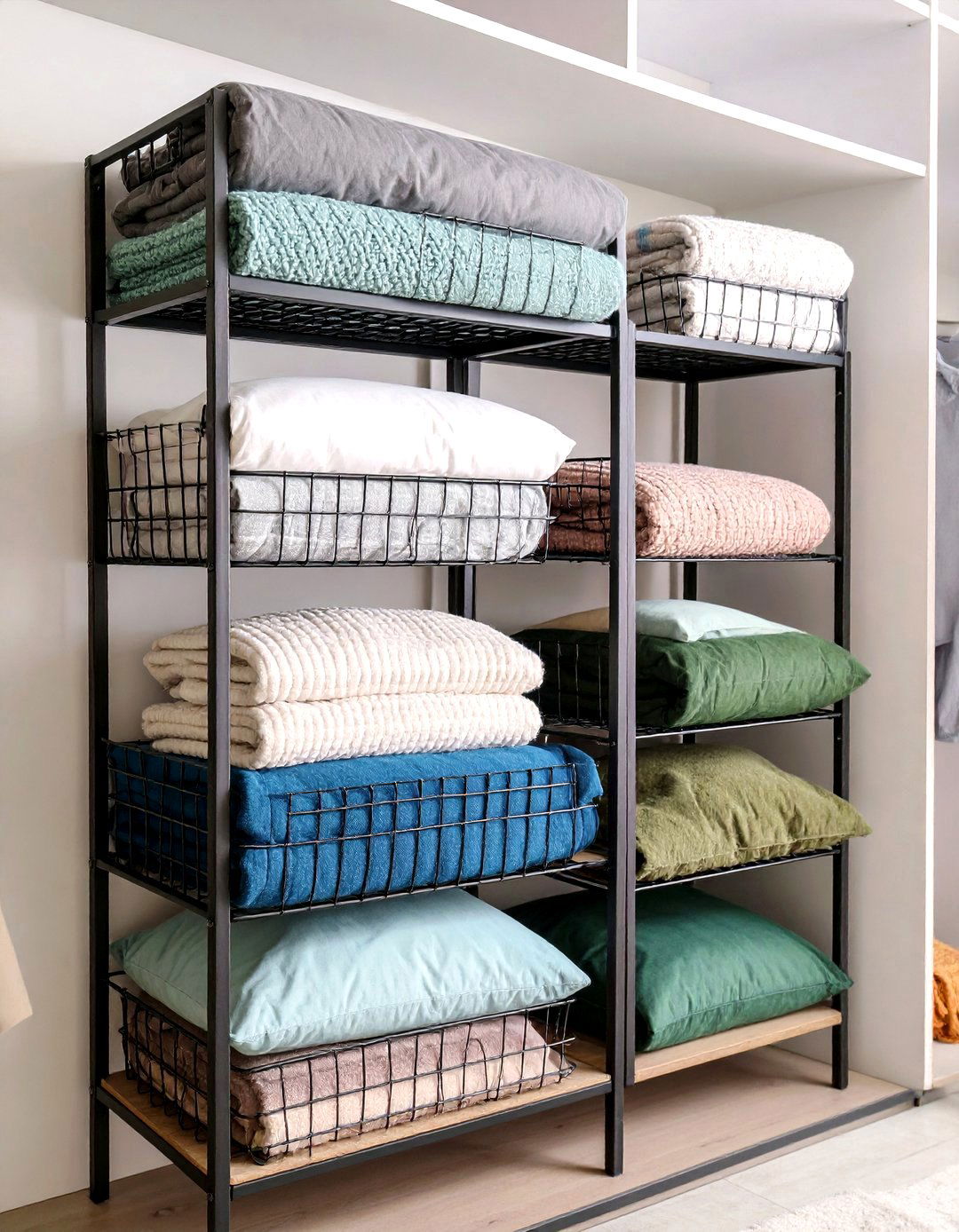
A tall, freestanding linen cabinet fitted with movable shelves lets you tailor heights to bulky duvets or slim sheet stacks. Closeable doors block light and dust, while a slim profile slips into a hallway corner. Add baskets on lower shelves for kids’ blankets and reserve an upper shelf for delicate quilts encased in cotton bags. Adjustable furniture evolves as bedding needs shift—no remodel required.
Conclusion:
Well-planned bedding storage doesn’t demand more square footage—just smarter use of the space you already have. From vacuum-compressed comforters under the bed to cedar-guarded heirloom quilts, each idea above pairs specific linens with environments that protect fibers and simplify retrieval. Mix-and-match these strategies to suit your home’s quirks, rotate sets seasonally, and label generously; your closets will stay serene, your linens will last longer, and laundry day will feel refreshingly fuss-free.


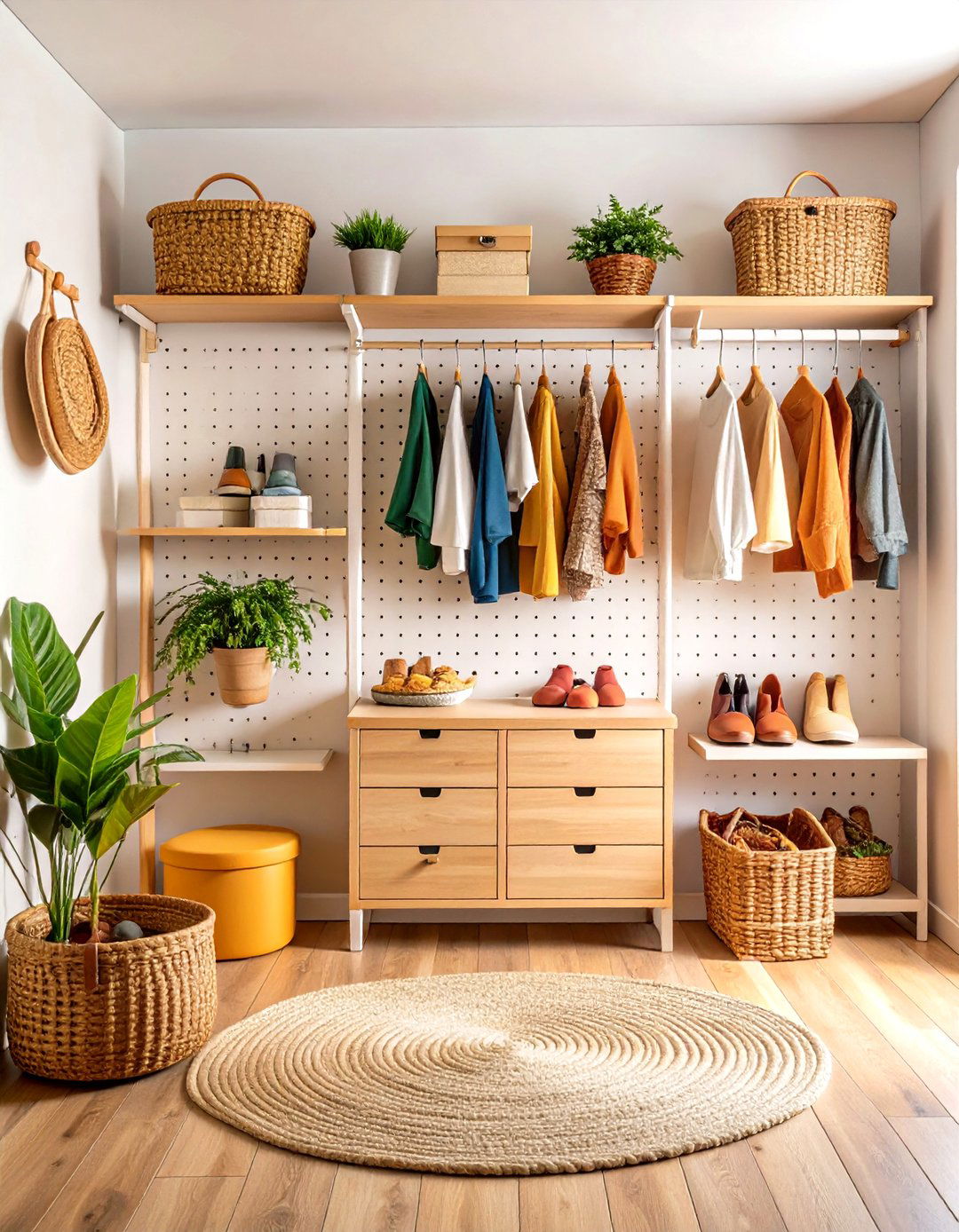
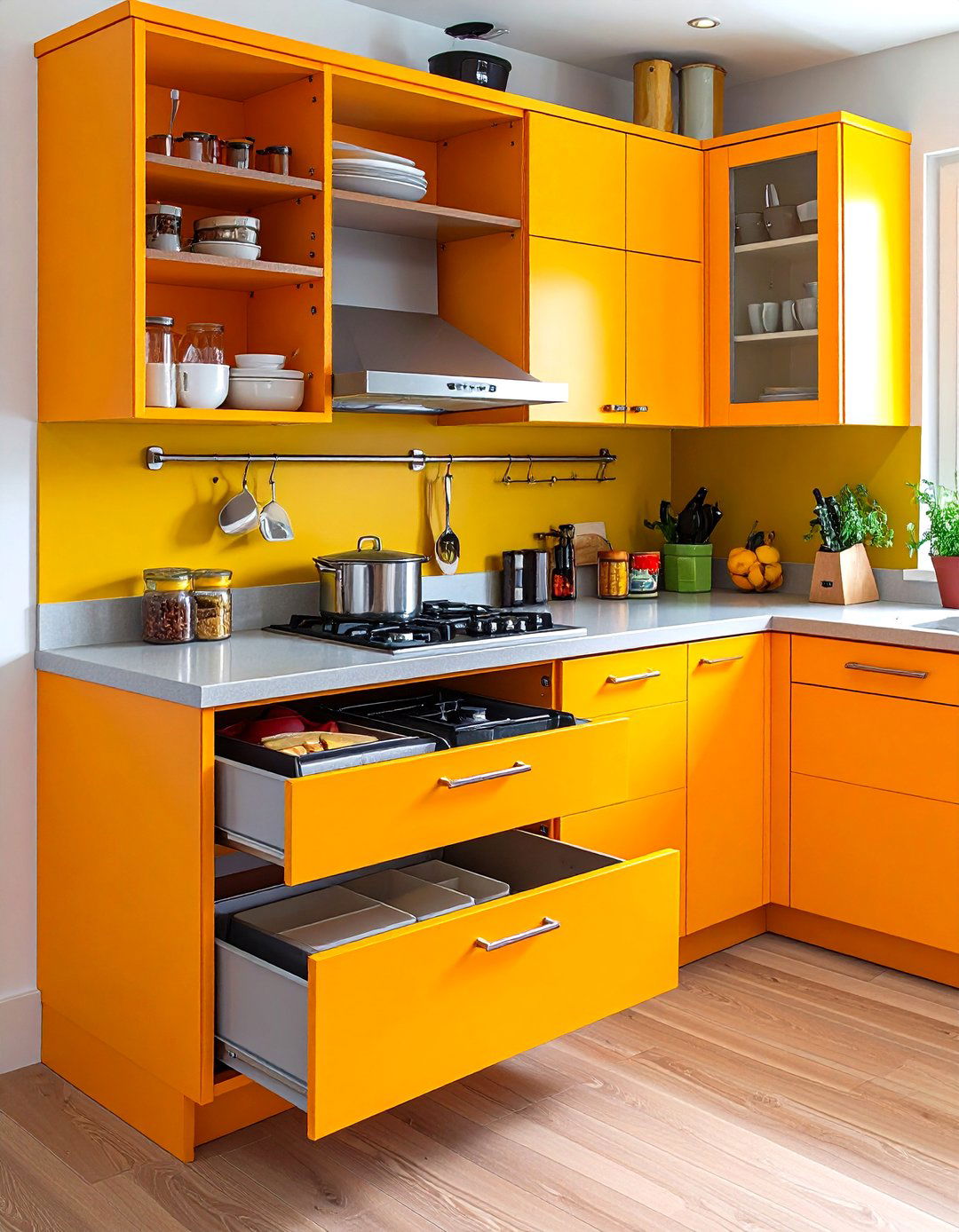





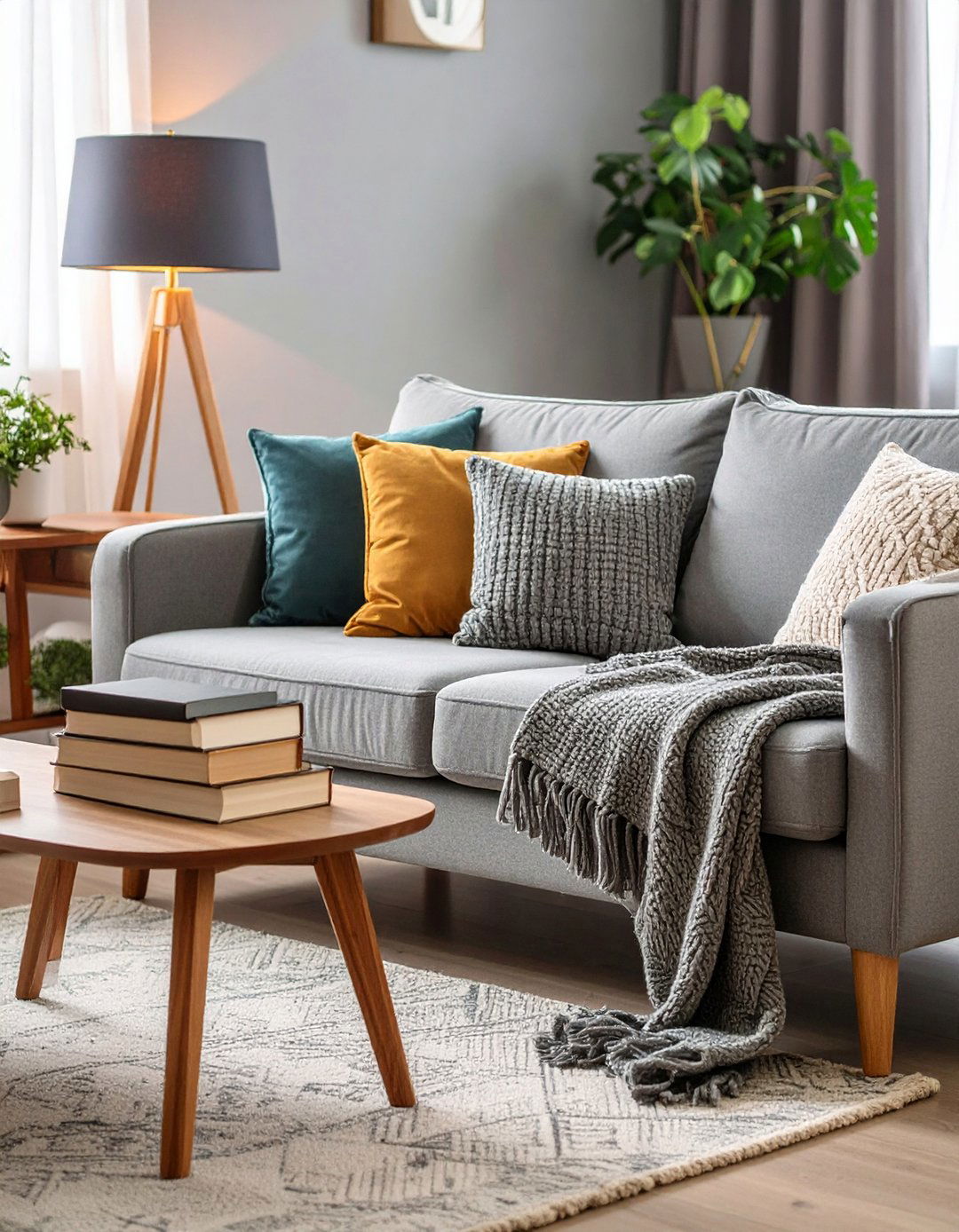


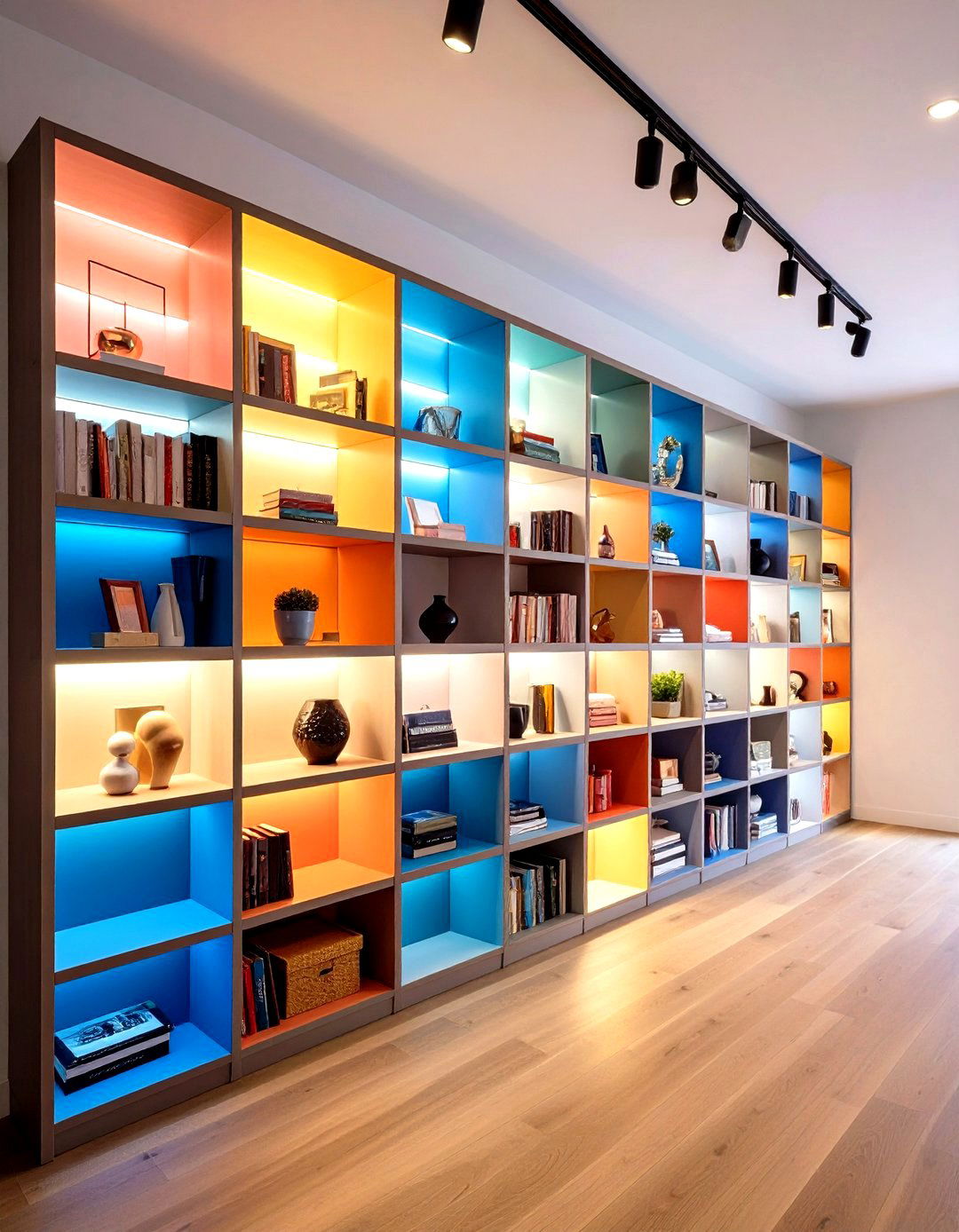



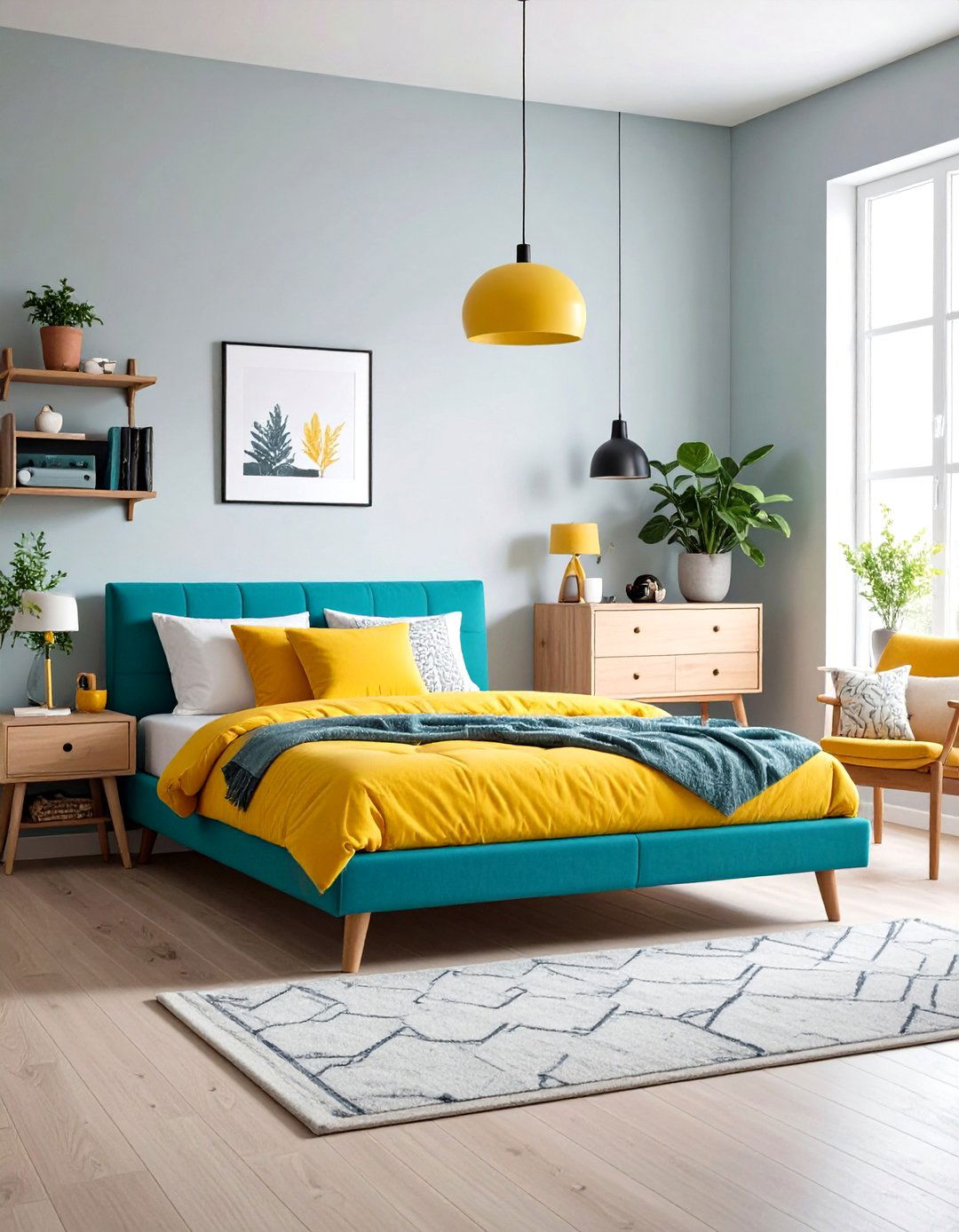
Leave a Reply